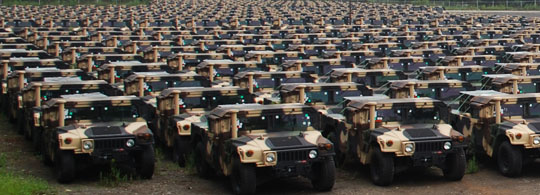
From Elinor Sloan, Canadian Defense & Foreign Affairs Institute: The clincher is the content of the generalized reference to “NATO” when we talk about a “NATO operation.” The discussion above reveals that when an operation includes a large US combat element then Canada’s experience is, relatively, a much better one than when the operation is not built on a strongly engaged US core. This is because NATO as an organization does not have many of its own assets. It has an integrated military command structure that brings together the forces placed by member countries at Alliance disposal. However, when it comes to any particular mission, countries must still agree that these forces can be deployed to theatre. In the final analysis, they are still national assets. “The biggest challenge in Afghanistan,” Fraser stated in the wake of Medusa, “is that NATO in itself has virtually none, or very little, of the combat enablers…The enablers are for the most part still owned by their contributing countries, and here in Afghanistan largely the enablers we are looking at are aviation, air and ISR, and they are still American or British. . . . .”
Canada’s first question when considering a commitment to a future NATO operation, argues General Labbé, must be “Who can we rely on to help us?” Caveats, he notes, are a “reality going in, driven by domestic politics”; the argument is not that there should be no caveats, but rather that they should be known in advance and accounted for in our decision making. Generals Beare and Vance concur that, in essence, there is “no point in going on about caveats.” Rather, the requirement is a wide-eyed assessment of Canada’s role and level of participation based on the commitments that countries have or have not made. “Even article V offers each nation independent action. The discretionary space now translates to out of area [operations].”
While these are all valid points, the Afghanistan case illustrates that when it comes to NATO crisis management missions—non-article V, out of area operations—we do not have to search far to find answers on when and whether to participate. For Lieutenant-Colonel Hope, who experienced first-hand working within the Alliance at the tactical level, Canada should only take part in NATO out of area combat operations if they are supported by US assets. “Canada can fight, as long as the US is there to fill the gaps.” In the personal opinion of Major General Neasmith, who worked at the operational/strategic level within ISAF, the ideal is that there be four eyes involvement, but the bottom line is core American participation. Canada should say “yes” to NATO operations “preponderantly led by the United States.”
These conclusions hold important implications for Canada when one considers the strategic guidance for the US Department of Defense released by the Pentagon in January 2012. The new strategy—indeed, its title—stresses that America will take measures to sustain US global leadership. To do so the United States will focus on a combination of high technology and small footprint approaches, that is, on a smaller, leaner military force whose capability is magnified by advanced combat enablers of the sorts that were so important in Afghanistan. Central to the strategy, to compensate for the reduced force size, is that “U.S. forces will plan to operate whenever possible with allied and coalition forces.”
For Canada the new strategy points to both caution and opportunity. The caution involves ensuring from the outset that any future NATO crisis management operation it participates in, enjoys the core support and direction of the US government and military. The case examined here reveals there is no substitute for US leadership, vision and engagement. The opportunity lies in the fact that while America will still act in a leadership capacity, it will want, and need, dependable, capable allies that can contribute a robust combat capability. Canada—and others—will need to decide how to respond to this opportunity. “NATO is an us not a them,” Beare has underscored, “try to think about it that way.” It is easy to fall into the mindset of looking for “NATO” to provide capabilities when what we need to do is look at our own individual, national, capabilities. As we look to the future of NATO’s crisis management task, it is this sort of thinking that should frame our conceptual and concrete starting point.
Elinor Sloan is Associate Professor of International Relations in the Department of Political Science at Carleton University, Ottawa, and is a former defence analyst with Canada’s Department of National Defence. (photo: hummerguy.net)
Image: hummerguynet%208%2024%2012%20holding%20yard.jpg
